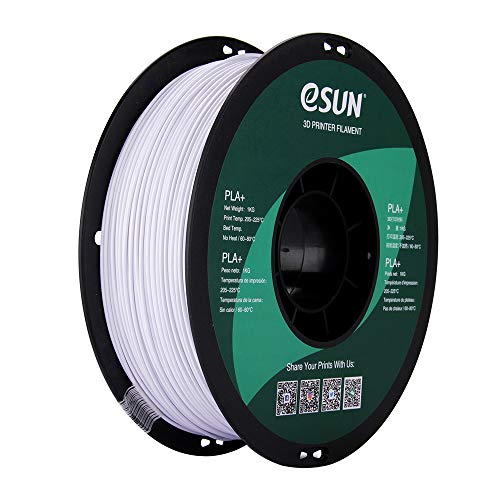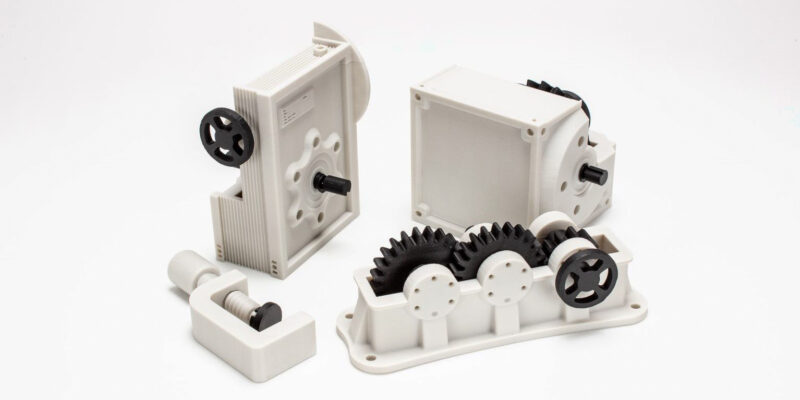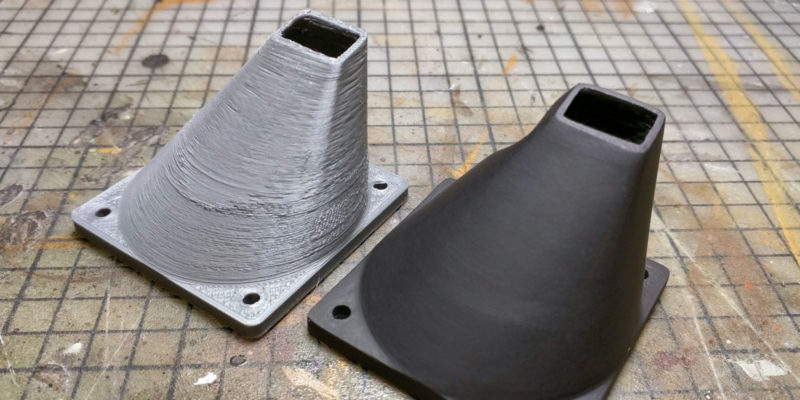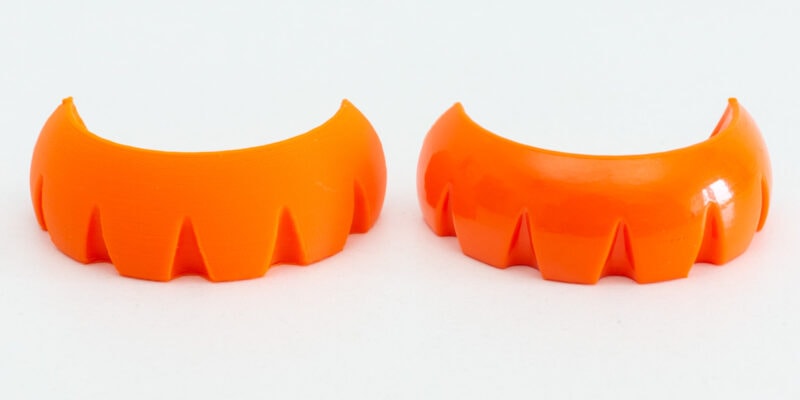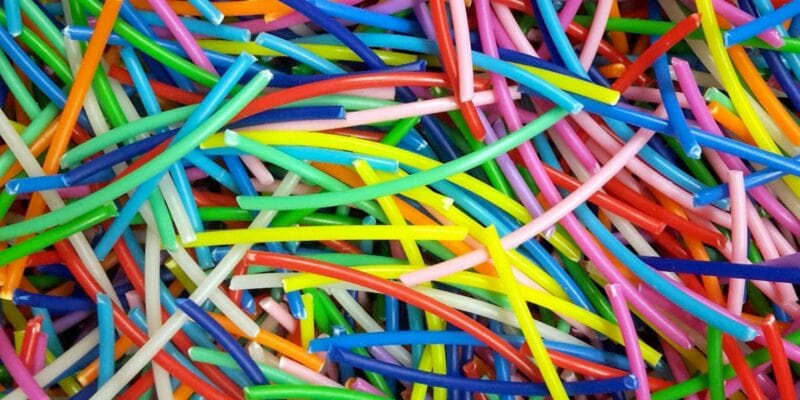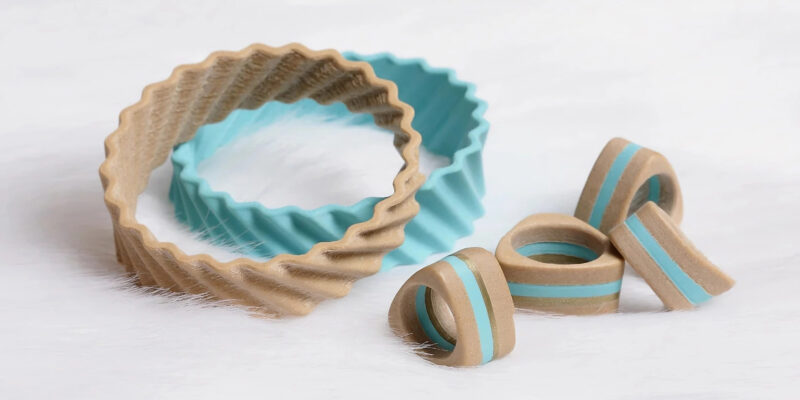As one of the most commonly used 3D printing materials, PLA is a versatile and affordable bioplastic. Its material properties make it easy to print with and compatible with even the most basic 3D printers, making it a favorite with many beginner printing enthusiasts.
However, pure PLA filament has some drawbacks that lead several filament manufacturers to create enhanced versions of the material. This improved PLA is known as PLA+, or ‘pro PLA’, filament and offers a better and more reliable printing experience.
If you’re wondering what the differences are between PLA and PLA+ filaments, look no further. In this article, we’ll take you through the comparison between PLA vs PLA+, explain their similarities and differences, show you when to use them and what components you need to successfully 3D print with them.
What are PLA and PLA+?
What is Regular PLA?
PLA (polylactic acid) is a biodegradable thermoplastic made from plant matter like corn starch or sugar cane. Because it is cheap to produce and easy to use, PLA is one of the leading materials used in the 3D printing process.
What is PLA+?
PLA plus (also known as pro PLA or tough PLA) is a specially formulated PLA made by adding other materials to PLA to improve some of the issues that 3D printing users typically have with the pure material. PLA+ varies significantly between different filament manufacturers because each one uses different added materials or mixes them in at different strengths.
Modified PLA plus filaments focus on creating better layer adhesion, temperature resistance, print quality, and impact resistance than standard PLA. They tend to have better material properties than PLA and are easier to use.
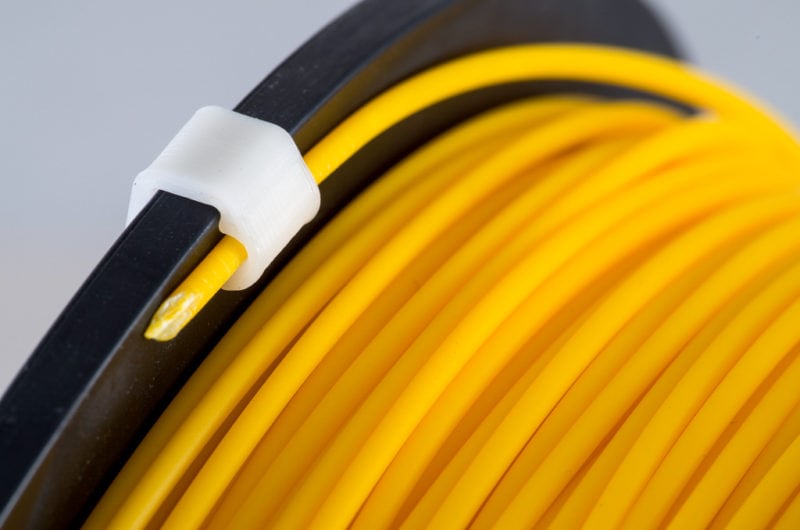
Comparing PLA vs PLA+
Surface Finish
The surface finish of PLA vs PLA plus is usually not overly distinguishable. Most brands of PLA plus are less glossy than their normal counterparts, but print quality is not where the real differences between PLA and PLA plus lie.
Printing Temperature
PLA and PLA plus both print well with a nozzle temperature of about 200C. There is, of course, no set temperature for either type of filament, since the ideal temperature varies between different brands of filament, print settings, and the specific 3D printer that is being used.
In addition to nozzle temperature, most pro PLA is recommended to be used with a heated bed (though it is not necessary) for optimal first layer adhesion. Standard PLA can benefit from this as well but also adheres properly when using painter’s tape or a glue stick on an unheated print bed.
Most filament manufacturers list a range of acceptable nozzle temperatures for their products (usually between 190C and 220C for both PLA and PLA+). Finding the optimal PLA filament printing settings for your printer involves some trial and error, though 3D printing a temperature tower makes it significantly easier.
Strength
Since there is no standard formula for modified PLA, it is difficult to say which material is stronger overall. Tough PLA filaments usually put greater emphasis on strength than other PLA+ formulas. In terms of tensile strength, standard PLA tends to win.
Where tough PLA products differ is that they tend to deform under lower tensile stress than PLA, but they don’t fully snap like normal PLA. They also typically have greater impact resistance, so PLA+ products are more forgiving when dropped.
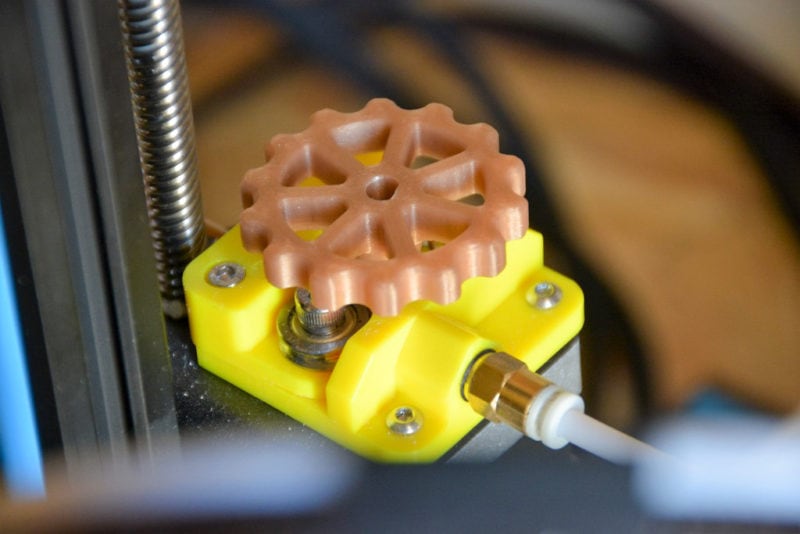
Flexibility
PLA+ filaments tend to be more flexible than their PLA counterparts. Whereas standard PLA filament is rigid and brittle, PLA plus manufacturers focus on adding some elasticity to the finished product. This is why parts 3D printed with PLA+ will deform instead of snap, and why they have superior impact resistance.
That said, neither PLA nor PLA+ comes close to the flexibility of flexible filaments like TPU.
Temperature Resistance
One of the biggest drawbacks of normal PLA filament is its low temperature resistance. While that makes 3D printing with it easier (since it needs a lower extrusion temperature than most other filament materials), it makes finished PLA prints very weak in high-temp environments.
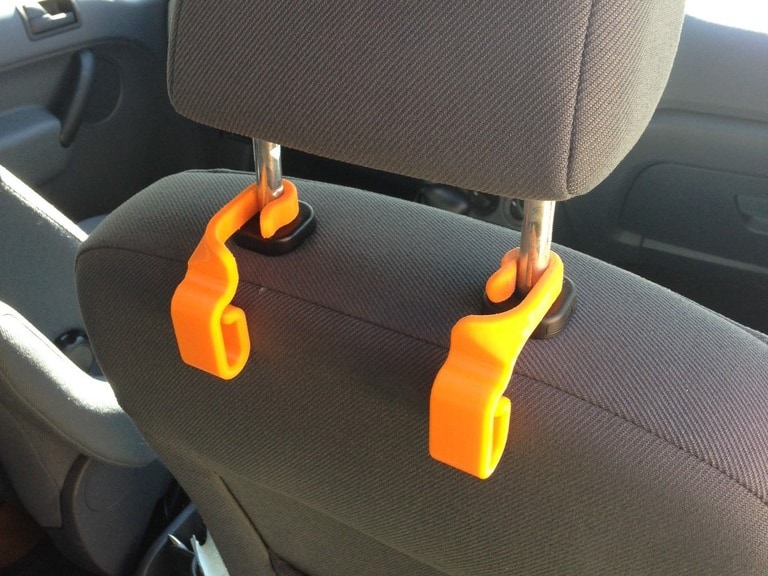
Some types of PLA+ such as ProtoPasta’s HTPLA are designed to have higher temperature resistance than regular PLA. Finished HTPLA parts have to be annealed (baked and cooled) at a certain temperature after 3D printing to be more resistant to heat. Without this added step, HTPLA parts have about the same heat tolerances as normal PLA.
Unless specifically listed as a high-temperature, annealable material, most PLA+ formulas warp and soften at the same rate as normal PLA. If you need good heat resistance in your prints, you should consider using ABS filament instead. Our guide on PLA vs ABS will give you more information on how these two filaments compare.
Moisture Sensitivity
Another one of PLA’s biggest issues is its sensitivity to moisture. Standard PLA filament absorbs moisture from the air and can be almost impossible to use once it is affected. PLA affected by moisture turns brittle and snaps easily. This can happen either during the print process or after.
PLA with moisture will also bubble during 3D printing because the temperature of the nozzle actually heats the moisture in the filament to its vaporizing point. The filament bubbles then pop as the steam escapes.
Even finished PLA prints are susceptible to moisture absorption issues. When exposed to water, PLA starts to degrade and break down. That is why materials like PETG are used instead of PLA for projects that have a lot of direct contact with moisture. Think vases, planters, hose adapters, and so on.
Many PLA+ brands bill themselves as non-bubbling and do not hold moisture the way traditional PLA does. This not only saves your materials from spoiling, but it also ensures higher print quality and less breakage in the extruder and filament path while 3D printing.
Regardless of the filament material (PLA, PLA+ or other), you can use a filament dry box to ensure your filament is dry whenever you need it.
Storage
As we mentioned above, PLA filament does not do well with moisture. Traditional PLA has to be stored in air-tight containers to keep it from spoiling. Many users also use filament dryers or dehydrators to remove any moisture from the filament before 3D printing with it.
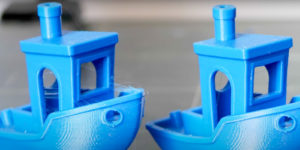
Pro PLA tends to be more forgiving if it is not stored properly. Since it is formulated to be less brittle and porous, it absorbs less moisture from its surroundings.
Biodegradability
Both PLA and PLA+ are biodegradable materials. However, since PLA plus formulas vary so widely between brands, some have added components that do not break down as easily as their PLA base. The best way to ensure biodegradability and the filament’s environmental impact, you should check the material safety data sheets to see exactly what additives are included.
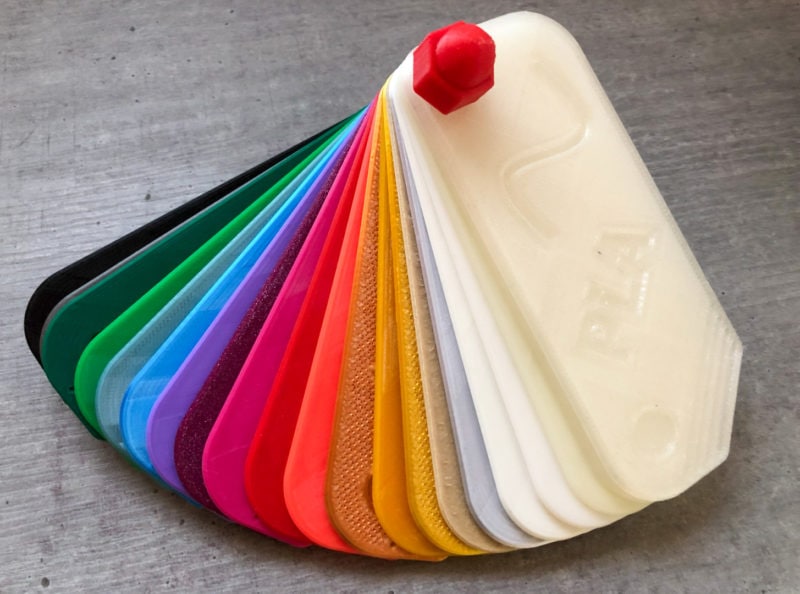
Post-Processing
Post-processing PLA and PLA+ is done with the same methods. We have a dedicated article on PLA smoothing that you can check out if you are interested in the various ways you can remove layer lines from your PLA(+) 3D prints. Gluing PLA and PLA+ 3D prints is practically identical as well.
Price
Between the two materials, pro PLA is more expensive than standard PLA. PLA+ has additional ingredients and is more difficult to produce, so this difference in PLA vs PLA+ is expected. The price differs depending on what physical properties the PLA+ is improving.
Many PLA+ formulas designed for a better printing experience (such as eSun) do not have a huge difference in price between their PLA+ and PLA filaments. Tough and heat resistant PLA+ products, on the other hand, tend to cost at least $10 per 1 kg spool more than traditional PLA, if not more.
When to Use PLA and When to Use PLA+
Standard PLA filament is great for rapid prototyping projects. When you need to quickly print something to make sure it works as intended, PLA is a good material to test with. Since it does have good tensile strength, it is also a good choice for parts that need more stress resistance.
PLA plus is a good option for 3D printing projects that need better impact resistance. A phone case is a good example of this, since it is not uncommon for people to drop their phones multiple times.
Since many PLA plus formulas warp and shrink less than traditional PLA, it is a better choice than regular PLA for projects that need a high rate of dimensional accuracy, such as industrial parts.
Heat-resistant PLA plus filaments are obviously a better choice than PLA options for projects that will have a lot of exposure to the heat or the sun. However, these filaments are worse for dimensional accuracy because the annealing process can shrink them even further than the initial printing process.
As PLA degrades when it comes in contact with moisture, the more water-resistant pro PLA filaments would be an ideal choice for prints like garden décor, birdhouses, and other things that are left outside in the elements.
Other PLA plus manufacturers add very specific additives to make them suitable for other applications. Antimicrobial PLA formulas are best utilized in situations where bacterial buildup may be an issue, such as children’s toys, PPE, and food contact items.
If you are concerned about PLA and food safety, we recommend reading our dedicated article on the topic.
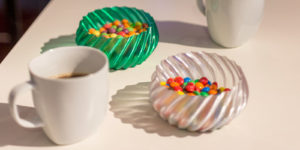
Most PLA and PLA plus brands use the same print settings, which makes it easy to transition from using one material to the other. Oftentimes, sticking to your existing PLA filament print settings will give you great results with PLA+.
Which Brands of PLA+ are Best?
eSun
eSun is one of the most well-known PLA+ brands available and is an affordable option for premium PLA. Their PLA+ products focus on better layer adhesion, minimal shrinkage, and stronger impact resistance.
- $23 per 1kg spool
- Available in 18 colors
Overture
Another PLA+ brand focused on strength, Overture professional PLA is five times more impact resistant than normal PLA. It is also formulated to cause fewer nozzle clogs and have fewer bubbles caused by trapped moisture in the filament.
- $26 per 1kg spool
- 20 colors available
Jayo
Jayo PLA+ focuses on brighter print colors, decreased brittleness, and excellent layer adhesion. While they don’t have as many options as some of the other brands, their products’ exceptional print quality makes up for it.
- $22 per 1kg spool
- 8 colors available
Duramic
Duramic’s PLA+ filament boasts a toughness of eight times that of normal PLA, making significantly stronger than its base materials. In addition to its strength, Duramic PLA+ also reduces the amount of nozzle clogs and bubbles you will encounter while printing.
- $20 per 1kg spool
- 29 colors available
If you want help choosing standard PLA filaments, check out our article on the best PLA filaments for more information.
Is PLA+ Better Than PLA?
PLA+ is a subjective term that varies from brand to brand. In a PLA vs PLA+ comparison, PLA+ filaments will have advantages over standard PLA in some ways depending on what physical properties it is formulated to improve.
Even though PLA+ always offers some improvements over PLA in specific properties, PLA will still be a better choice in some situations. The way to get the best results is to assess the needed functionality and choose a material from there on a project-by-project basis.
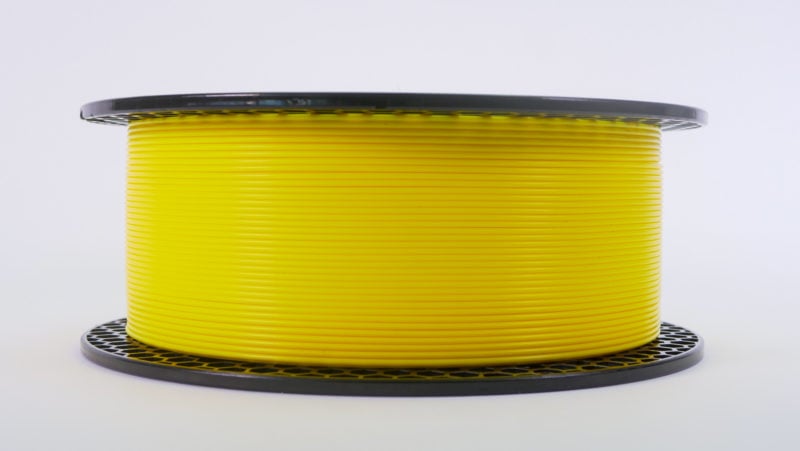
Is PLA+ Stronger Than PLA?
PLA+ is more impact resistant than PLA, and tough PLA+ filament is several times stronger in terms of durability. PLA still has higher tensile strength, so it can withstand higher amounts of stress but will break completely when it reaches its limit. PLA+ filaments will start to deform under less pressure, but they will stretch instead of snap.
Can a PLA 3D Printer Use PLA+?
Yes. While some PLA+ filaments have higher printing temperatures than traditional PLA ranges (around 220C instead of 200C), a standard 3D printer can accommodate it. If your 3D printer does have some issues hitting those higher temps, try switching to a different PLA+ brand, since many brands do well with a low printing temperature of about 200C.
Is PLA+ the Same as PETG?
No, PLA+ is not the same as PETG. PLA+ is polylactic acid with small amounts of other materials added to make the resulting filament take on certain characteristics. Despite these additives, the finished product is mainly still composed of PLA.
PETG is polyethylene terephthalate (the material used in most commercial plastic bottles—especially for water and other beverages) with glycol added to make the filament less brittle. PETG prints at a much higher temperature than PLA or PLA+, has better heat resistance, and is typically stronger.
If you’re interested in the differences between PETG and PLA/PLA+, be sure to check out our PETG vs PLA comparison guide.
Conclusion
PLA is an easy-to-use and affordable filament option for 3D printing thanks to its low melting point wide availability. Enhanced PLA plus filaments are formulated to keep the best of regular PLA’s qualities while fixing some of its less desirable qualities like its brittleness, low heat tolerance, and moisture absorbency.
Now that you have a good understanding of PLA vs PLA+, you should have no issues using either material in your 3D printing. Do you prefer regular PLA? Or do you like the flexibility of PLA+? Let us know in the comments!


